Fall prevention for seniors gets a lot of lip service, but unfortunately, we don’t always do what we should to avoid the risk. Falls are risky for seniors because they can have disastrous outcomes. According to the Centers for Disease Control and Prevention (CDC), falls are a leading cause of injury and death among adults 65 years and older. One in four adults aged 65 and older falls each year, leading to more than 3 million emergency room visits, 1 million hospital stays, and 38,000 deaths.
That’s probably not news to you. Chances are, you know that trip-and-fall accidents can lead to severe injuries for older people. They may cause reduced mobility and a loss of independence. That’s why fall prevention is crucial for the well-being of older adults.
But that doesn’t mean you (or I) always take the steps we should take to prevent ourselves or others from falling. We somehow don’t get around to making changes we should make to prevent falls, or we’re in a hurry and don’t take the simple precautions we should take to protect ourselves. And that puts us at risk. Here’s an example:
A Fall that Could Have Been Prevented
On a sunny day, two days before Christmas, a couple of years ago, I saw the mailman come by. There was snow piled up on the lawn from a snowfall a few days earlier, but the driveway was clear. I had boots by the door, but I decided I didn’t need to bother to take off my sneakers and put on the boots.
Instead, I walked out of the house (without putting a coat on, either) and walked as fast as I could down the driveway to the road. I carefully stepped over and around the grayish-colored ice I saw in the road on the mailbox-side of the driveway. I pulled out the mail from the mailbox. Then I started to walk as quickly as my arthritic knees would let me back up the other side of the driveway (to avoid the visible ice).
I didn’t know there was black ice on that side until I put my foot down on it. When I did, I spun around and landed, right hand and wrist first, out in the road. When I tried to get up, my legs gave out and I landed a second time on my right hand and wrist.
That accident fractured my wrist in multiple places and dislocated it. But I was “lucky” that my only significant injury was the broken, dislocated wrist. A good hand surgeon and a couple of months in casts and splints healed the wrist.
Why Falls are so Risky for Seniors
Falls can lead to much more serious injuries than that one. Injuries such as fractures, head trauma, and even long-term disabilities.
Beyond physical injuries, the fear of falling again can take an emotional toll. This fear can cause seniors to limit their activities and reduce their physical activity, leading to decreased mobility and strength. And that’s a vicious cycle. Decreased physical fitness increases the risk of future falls.
What Makes Seniors Vulnerable to Falling
Seniors are more vulnerable to falls due to factors such as decreased balance, muscle weakness, vision problems, and certain medications that can affect coordination. Additionally, underlying health conditions like arthritis, osteoporosis, and neurological disorders can further increase the risk of falls among seniors.
So, it’s vitally important for seniors and their caregivers to understand these risks and take proactive measures to prevent falls. By recognizing the potential dangers and understanding the factors that contribute to falls, seniors can better protect themselves and maintain their independence.
What Causes Falls in Seniors
There are many factors that contribute to the increased risk of falls among seniors. Being aware of the causes can help you develop effective prevention strategies. Here are some of the more common things that cause seniors to fall down.
Environmental Factors that Cause Older People to Fall
Environmental hazards in and around the home are common contributors to falls. These include:
- Poor lighting
- Loose rugs or carpets
- Lack of handrails or loose handrails on stairs
- Clutter and obstacles in walking paths and on stairs
- Slippery floors
Physical Factors that Cause Falls
As we age, certain physical changes can increase the risk of falls:
- Muscle weakness and reduced strength
- Loss of bone density
- Balance problems
- Chronic health conditions such as arthritis, diabetes, and Parkinson’s disease
- Vision problems, such as cataracts or glaucoma
Related: Tools to Make Living with Arthritis Safer and Easier
Medications
Certain medications can cause side effects like dizziness, drowsiness, or low blood pressure, all of which can contribute to falls. It’s important for seniors to regularly review their medications with their healthcare provider to manage these risks.
Behavioral Factors
Behavioral factors also play a role in fall risk:
- Inadequate physical activity, which can lead to decreased strength and balance
- Wearing improper footwear
- Rushing or moving too quickly without caution
- Drinking too much alcohol
- Wearing shoes that don’t fit right or don’t provide enough support
Five Safety Tips to Prevent Senior Falls
Although there are many factors that can cause older people to fall, falls aren’t inevitable. There are proven strategies you can use to reduce the risk that you or a loved one will fall. They involve a combination of home modifications, physical activity, regular health check-ups, and the use of assistive devices.
(Common sense helps too. My fall on black ice probably wouldn’t have happened if I was wearing boots instead of sneakers and walked slowly and carefully to and from the mailbox.)
Home Modifications
Making simple changes around the home can significantly reduce the risk of falls:
- Improve lighting in all rooms, hallways, and staircases. To avoid tripping on objects, be sure to turn on a light when you walk into a room that’s dim or dark.
- Consider using non-slip mats in the bathroom and shower to prevent slips.
- Organize commonly used items within easy reach to avoid the need for seniors to climb or bend over.
- Remove tripping hazards such as throw rugs and loose rugs, shoes near doorways, and clutter.
- Be sure electric cords for lighting and other devices are secured where no one can trip on them.
- Install grab bars in the bathroom and handrails on both sides of stairs.
- Consider having stair lifts installed for seniors who have difficulty climbing stairs.
- Rearrange furniture to create clear walking paths.
Physical Activity
Staying active and engaging in regular physical exercise helps improve strength, balance, and flexibility, which can help prevent your from falling to the floor. Additionally, regular exercise can also improve bone density, which is essential for preventing fractures in case of a fall. Seniors should aim to incorporate a variety of exercises into their routine, focusing on activities that target different muscle groups and promote overall fitness.
Here are some types of exercises that help enhance coordination and stability, reducing the risk of falls.
- Exercise programs like Tai Chi or yoga can help reduce the risk of falling by improving balance and flexibility. Chair yoga and other sitting exercises can help, too.
- Strength-training exercises can enhance muscle strength. Many strength training exercises can be done at home with resistance bands and inexpensive light weights you can purchase in WalMart or Target or similar stores. Ask your physician to recommend simple exercises to start with.
- Even daily activities like walking can contribute to better physical fitness.
- Consult with a healthcare provider or a fitness professional to develop a safe and effective exercise plan tailored to individual needs and abilities.
Regular Health Check-ups
When it comes to fall prevention for seniors, seeking professional help can make a significant difference in reducing the risk of falls. Healthcare professionals, such as doctors, physical therapists, and occupational therapists, can provide valuable insights and guidance tailored to the individual’s specific needs and circumstances.
They can conduct assessments to identify potential risk factors for falls, such as balance issues, muscle weakness, problems with eyesight, or medication side effects. In addition, healthcare professionals can also address underlying health conditions that may increase the risk of falls, such as vision problems or cardiovascular issues.
Based on their findings they can recommend personalized fall prevention plans that may include exercises to improve strength and balance, recommendations for assistive devices, and modifications to the home environment to enhance safety.
Assistive Devices
Using assistive devices can provide additional support and stability. Don’t let embarrassment stop you from using a cane, walker, or other assistive device. Imagine how much more embarrassed you’d be if you fell, got injured, or couldn’t get up because you didn’t use the assistive device.
- Canes and walkers can help with balance and mobility. If you need a cane, the type that stand on their own when you let go of the handle are more convenient to use than conventional canes.
- Use hiking poles if you go hiking on paths in the woods. A hiking pole can help you from losing your balance when you walk over roots on the path or traverse other areas where the ground is uneven.
- Ensure assistive devices are properly fitted and used correctly.
Technology
- If you have a smartphone and keep it with you, you can use the smartphone to call for help if needed.
- Smartphones, smart watches and fitness devices can help you record your exercise progress. Some have apps that remind you to exercise and praise you when you meet goals you’ve set.
- Technology can also be invaluable for reporting falls if you are knocked unconscious or can’t move easily. Standalone medical alert systems will call for medical assistance if they sense you’ve fallen and aren’t responding. Some smart watches have hard fall detection functions that will send out alerts if you have a hard fall.
What to Do If You Fall and Get Hurt
Knowing what to do in the event of a fall can help minimize injuries and get the necessary help quickly.
Stay Calm
If you fall, try to remain calm and take a few deep breaths. Staying calm will help you assess your situation more clearly.
Check for Injuries
Before trying to get up, check if you are injured. If you suspect a serious injury, such as a broken bone, stay still and try to call for help.
Getting Up Safely
If you are not seriously injured, follow these steps to get up safely:
- Roll onto your side and rest for a moment.
- Slowly get onto your hands and knees and crawl to a sturdy piece of furniture.
- Place your hands on the furniture and slowly rise to a seated position.
- Sit for a moment before attempting to stand.
If you’re outdoors when you fall, look at your surroundings. If you’re in a road, or in some other dangerous or precarious position, try to wiggle or crawl away before you try to stand up.
Seek Medical Attention
After a fall, it’s important to see your healthcare provider, even if you don’t think you’re seriously hurt. They can check for injuries and help prevent future falls by addressing any underlying issues.
Conclusion
Falls are a significant concern for seniors, but many falls can be prevented with the right knowledge and precautions. By understanding the risks, making necessary home modifications, staying active, and using assistive devices, seniors can reduce their risk of falls and maintain their independence.
If a fall does occur, knowing how to respond can help minimize injuries and ensure prompt medical attention. Take proactive steps today to stay safe and enjoy a healthier, more independent life.

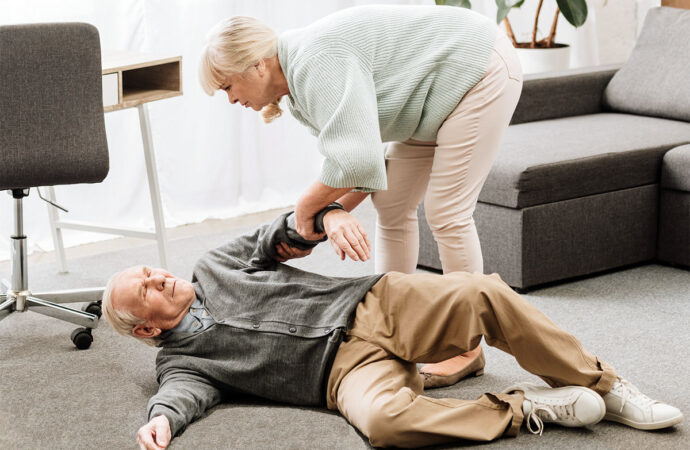
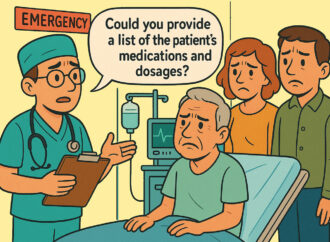
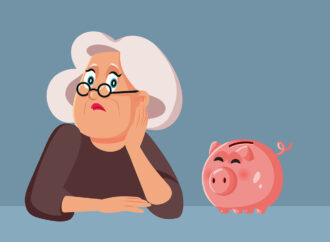
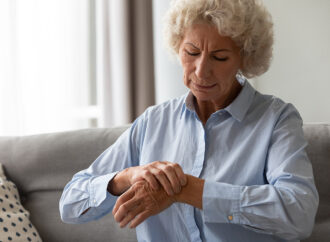
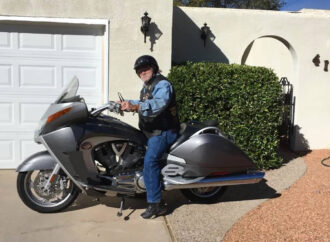


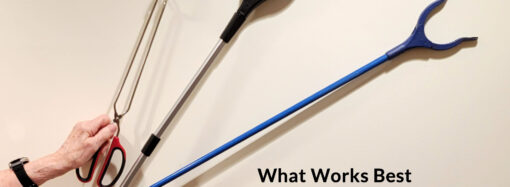
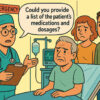

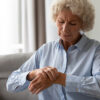


Leave a Comment
Your email address will not be published. Required fields are marked with *